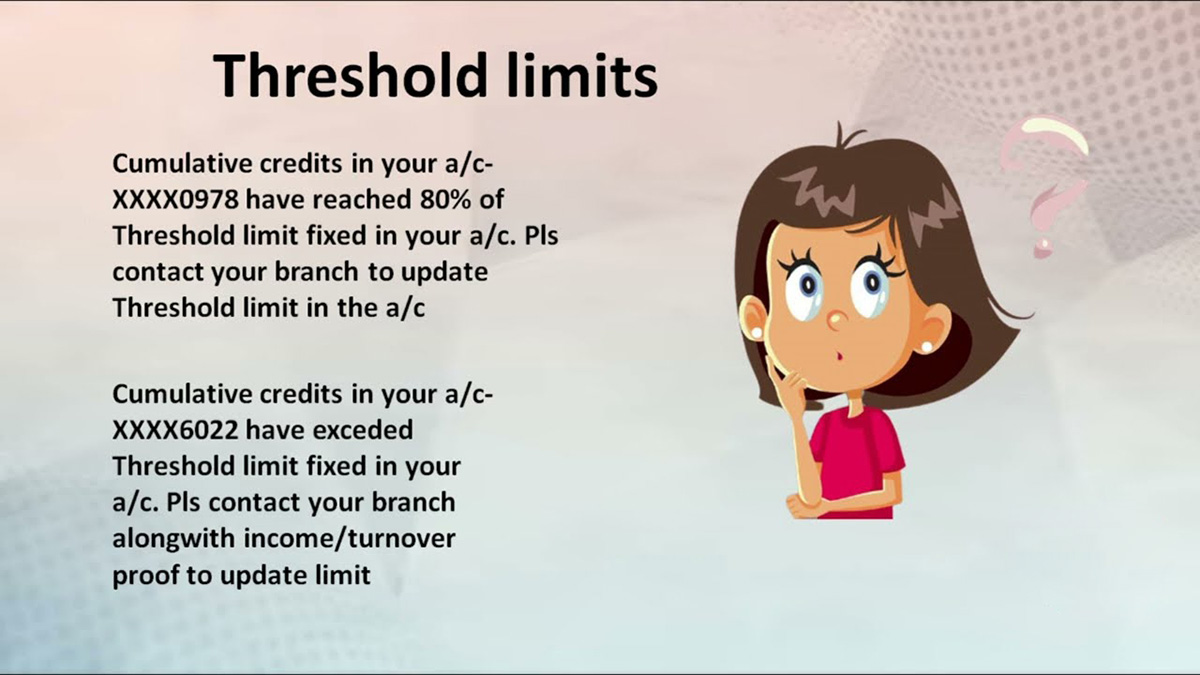Home>Finance>How Do I Do A Balance Transfer On A Credit Card


Finance
How Do I Do A Balance Transfer On A Credit Card
Published: February 18, 2024
Learn how to do a balance transfer on a credit card and manage your finances more effectively. Discover the benefits and steps to transfer your credit card balance.
(Many of the links in this article redirect to a specific reviewed product. Your purchase of these products through affiliate links helps to generate commission for LiveWell, at no extra cost. Learn more)
Table of Contents
Introduction
Understanding the Benefits of Balance Transfers
When it comes to managing credit card debt, a balance transfer can be a powerful tool to help you save money and pay off your balances more efficiently. This process involves transferring the outstanding balance from one credit card to another, typically with a lower interest rate. By taking advantage of a balance transfer, you can consolidate your debt and potentially reduce the amount of interest you pay, allowing you to make progress towards becoming debt-free.
However, it’s important to approach balance transfers with a clear understanding of how they work and the potential impact on your financial situation. While a balance transfer can offer significant benefits, it’s essential to navigate the process thoughtfully to maximize its advantages and avoid potential pitfalls.
In this comprehensive guide, we’ll delve into the intricacies of balance transfers, providing you with the knowledge and insights needed to make informed decisions and take control of your credit card debt. From understanding the fundamentals of balance transfers to selecting the right credit card and navigating the application process, we’ll walk you through each step of this valuable financial strategy.
Whether you’re looking to save money on interest, simplify your debt repayment, or gain a better understanding of how balance transfers work, this guide is designed to equip you with the essential information and practical tips to make the most of this financial tool.
Understanding Balance Transfers
Before delving into the process of executing a balance transfer, it’s crucial to grasp the underlying principles and implications of this financial maneuver. A balance transfer involves moving the outstanding balance from one credit card to another, typically a card with a lower interest rate. This can be an effective strategy for individuals seeking to reduce their interest payments and streamline their debt management.
By consolidating multiple credit card balances onto a single card with a lower interest rate, you can potentially save a substantial amount of money on interest charges. This can make it easier to pay off your debt more quickly, as a larger portion of your payments will go towards reducing the principal balance rather than being absorbed by interest.
It’s important to note that balance transfers often come with an introductory period during which a lower or even 0% interest rate is applied to the transferred balance. This period can range from several months to over a year, providing a window of opportunity to make significant progress in paying down your debt without accruing additional interest.
However, it’s essential to carefully review the terms and conditions of the balance transfer offer, as there may be associated fees, such as a balance transfer fee, that could impact the overall cost-effectiveness of the transfer. Additionally, it’s crucial to make at least the minimum payments on time and avoid any actions that could void the promotional interest rate, such as late payments or exceeding the credit limit.
Understanding the potential benefits and pitfalls of balance transfers is essential for making informed decisions and maximizing the advantages of this financial strategy. By gaining clarity on the intricacies of balance transfers, you can approach the process with confidence and set the stage for effective debt management and financial empowerment.
Choosing the Right Credit Card for Your Balance Transfer
When embarking on a balance transfer, selecting the right credit card to which you’ll transfer your balance is a pivotal decision that can significantly impact the outcome of this financial maneuver. Several key factors should be carefully considered to ensure that the chosen card aligns with your financial goals and sets the stage for a successful balance transfer.
1. Introductory APR: One of the primary considerations when choosing a credit card for a balance transfer is the introductory Annual Percentage Rate (APR) offered. Look for cards that provide a 0% or low introductory APR for balance transfers, as this can offer substantial savings on interest charges during the promotional period.
2. Duration of Introductory Period: Assess the length of the introductory period during which the promotional APR applies to balance transfers. Longer promotional periods provide more time to make significant progress in paying down your debt without incurring additional interest.
3. Balance Transfer Fees: Evaluate the balance transfer fees associated with the credit cards under consideration. While some cards may offer a 0% introductory APR, they may impose a fee for transferring a balance, impacting the overall cost-effectiveness of the transfer.
4. Ongoing APR: Beyond the introductory period, consider the ongoing APR that will apply to any remaining balance. It’s important to choose a card with a competitive ongoing APR to ensure that you can continue to manage your debt effectively after the promotional period ends.
5. Credit Limit: Take into account the credit limit offered by the card, ensuring that it is sufficient to accommodate the transfer of your existing balances without utilizing a high percentage of the available credit, which could impact your credit score.
By carefully evaluating these factors and comparing the terms of various credit card offers, you can identify the card that best suits your financial needs and goals. Choosing the right credit card for your balance transfer sets the stage for a successful debt management strategy, enabling you to make significant strides towards achieving financial stability and freedom.
Applying for the Balance Transfer
Once you have identified the credit card that aligns with your financial objectives and offers favorable terms for a balance transfer, the next step involves initiating the application process. Applying for a balance transfer typically entails several key steps to ensure a smooth and successful transition of your existing credit card balances to the new card.
1. Review the Terms and Conditions: Before initiating the application, carefully review the terms and conditions of the credit card offer, paying close attention to the details of the balance transfer promotion, any associated fees, and the requirements for eligibility.
2. Gather Necessary Information: Prepare the essential information required for the application, including personal details, financial information, and the account numbers and balances of the credit cards from which you intend to transfer balances.
3. Complete the Application: Fill out the credit card application accurately and thoroughly, ensuring that all required fields are completed with precision. Be prepared to provide details about your income, employment, and existing financial obligations.
4. Specify the Transfer Amounts: During the application process, you will typically have the opportunity to specify the amounts you wish to transfer from each existing credit card to the new card. Take care to input the correct balances to ensure a seamless transfer process.
5. Await Approval: After submitting the application, await the credit card issuer’s review and approval. This may involve a credit check to assess your creditworthiness and determine the credit limit and terms for the new card.
6. Transfer Confirmation: Upon approval, you will receive confirmation of the approved credit limit and the details of the balance transfer, including the timeline for the transfer and any associated terms and conditions.
By following these steps and approaching the application process diligently, you can position yourself for a successful balance transfer, paving the way for more efficient debt management and potential savings on interest charges. Applying for a balance transfer with careful attention to detail and thorough preparation sets the stage for a seamless transition to a new credit card with favorable terms for reducing your outstanding debt.
Completing the Balance Transfer
Once your application for a balance transfer credit card has been approved, it’s time to initiate the process of transferring your existing credit card balances to the new card. Completing the balance transfer involves several crucial steps to ensure a seamless transition and maximize the benefits of consolidating your debt onto a card with more favorable terms.
1. Gather Account Information: Collect the necessary account information for the credit cards from which you intend to transfer balances. This typically includes the account numbers, outstanding balances, and the respective payment addresses.
2. Contact the New Credit Card Issuer: Reach out to the customer service or balance transfer department of the new credit card issuer to initiate the transfer process. You may be able to do this online, over the phone, or by completing a balance transfer request form provided by the issuer.
3. Specify Transfer Details: Clearly communicate the details of the balances you wish to transfer, including the account numbers and the specific amounts to be transferred from each existing credit card. Ensure accuracy to prevent any delays or errors in the transfer process.
4. Verify Transfer Completion: Once the balance transfer request has been submitted, verify that the transfer has been completed by monitoring your existing credit card accounts. It may take several days to a few weeks for the balances to be fully transferred to the new card.
5. Confirm Closure of Paid Accounts: After the balances have been successfully transferred, confirm that the respective accounts with the previous credit card issuers have been paid off and closed, if desired. This helps streamline your financial accounts and reduces the risk of incurring additional charges on those cards.
6. Adhere to Payment Obligations: While the balance transfer can provide relief from high interest rates, it’s crucial to continue making at least the minimum payments on the new credit card on time. Failure to do so could result in the loss of promotional terms and the accrual of additional interest.
By diligently completing the balance transfer process and staying attentive to the details, you can effectively consolidate your credit card debt onto a new card with more favorable terms, potentially saving money on interest and simplifying your debt repayment. This strategic financial move sets the stage for more efficient debt management and progress towards achieving greater financial stability.
Managing Your Balance Transfer
After completing the balance transfer process and consolidating your credit card debt onto a new card with more favorable terms, it’s essential to adopt effective strategies for managing your balance transfer and leveraging this financial maneuver to achieve your debt repayment goals.
1. Create a Repayment Plan: Develop a structured repayment plan to systematically pay down the transferred balances within the promotional period. Calculate the monthly payments required to eliminate the debt before the promotional APR expires, taking into account any balance transfer fees incurred.
2. Avoid New Purchases: Refrain from making new purchases on the balance transfer credit card, especially if they would accrue interest at a higher rate. Focus on reducing the transferred balances to benefit from the promotional APR and minimize interest expenses.
3. Track Payment Due Dates: Stay vigilant about the payment due dates for the new credit card and ensure that payments are made on time. Late payments can result in the loss of promotional terms and the imposition of penalty interest rates.
4. Monitor Promotional Period Expiry: Keep track of the expiration date of the promotional APR for the balance transfer. This allows you to plan your repayment strategy effectively and avoid unexpected increases in interest charges after the promotional period ends.
5. Consider Additional Payments: If possible, allocate additional funds towards paying down the transferred balances to expedite the debt repayment process. Every extra payment made contributes to reducing the outstanding debt and the interest accrued.
6. Review Ongoing APR: As the promotional period nears its end, assess the ongoing APR that will apply to any remaining balance. Evaluate the possibility of transferring the remaining balance to another card with a favorable ongoing APR to continue managing your debt effectively.
By proactively managing your balance transfer and adhering to sound financial practices, you can harness the benefits of consolidating your credit card debt onto a new card with more advantageous terms. This approach empowers you to make significant progress in paying down your debt, potentially saving money on interest, and achieving greater financial stability.














